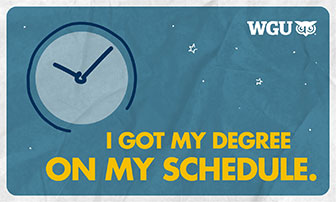







Custom Search
|
|
 
|
||
|
Checking and Editing Drawings In any drafting layout, it is important that organization, format, conformance to applicable standards, and accuracy of every detail be checked thoroughly. Techniques in checking and editing drawings are acquired through actual experience and continuous study. Mistakes are readily seen by an individual who has long experience with the subject matter under consideration and a wide range of knowledge. Be systematic in checking and editing drawings. Review the suggested procedures described in chapter 4 of this TRAMAN; inasmuch as there are no set rules of procedure, perhaps you could develop your own system along these lines. During the preparation of construction drawings, feel free to consult with the Builder, Steelworker, Electrician, Equipment Operator, or Utilitiesman concerning any problems that may arise. These personnel will have to construct from your drawings. By consulting with them beforehand, you may avoid designs that are not feasible. Much time and effort may be saved by simply questioning knowledgeable people in each trade involved. Working closely with the planning and estimating section is highly beneficial. Personnel in that section will know what materials are readily available and will eventually be required to make material estimates from your construction drawings. A wise drafting supervisor will have the planning and estimating section check all construction drawings before forwarding them for approval. Training of Drafters A detail drafter must know just about all there is to know about prescribed conventions, procedures, and practices before he can be assigned to a detail (that is, a complete drawing) job. The best way to train new personnel for detail work is to assign them to tracing, reproduction making, filing, and the like, with the additional requirement of continuous spare-time or downtime study of appropriate NAVFAC publications and military standards. That study should include MIL-HDBK-1006/1 and the publications, such as MIL-STD-100E, that are referred to in MIL-HDBK-1006/1. As you know, most drawings used in Seabee construction are prepared by professional architect-engineer firms. Those drawings are a valuable source of study for the newand even the more experienceddrafter to "see how the professionals do it." A study of typical drawings in NAVFAC P-437, Facilities Planning Guide, is also helpful. Other typical drawings and drafting conventions can be found in commercial publications, such as the Architectural Graphic Standards. Work Assignments and Work Schedules One of the most important responsibilities you will have as a drafting room supervisor is that of assigning work. To be able to do this, you must understand the work you must know exactly what you are asking each person to do and how it should be accomplished, and you must know each individuals capabilities. A person may be proficient at one thing and not at another. Some individuals may be able to work well on projects that require cooperation with others; some work best alone. The varied aspects of each individuals responsibilities and character should be taken into consideration in assigning work. By now, you have probably had some experience with most of the work done by Seabee drafters. At one time or another, you probably have had to sit down and prepare a drawing similar to the one you will be assigning to a subordinate. Or, if you have not had the experience yourself, you probably have sat beside someone who did; and if you were alert to your opportunities, you profited by his experience. But there is more to it than that. As a supervisor, you must learn to be able to think through the job without ever actually putting anything on paper. You must be able to foresee all of the steps necessary to do the job in order (1) to get all the information needed for the job from the person requesting it and (2) to pass this information onto the person assigned the job. Suppose, for example, that the operations officer has tasked the engineering officer to take a standard manufacturers preengineered metal building foundation design and modify it so that it will withstand wind forces of 150 miles per hour. The engineering officer has prepared sketches from his calculations and has given the sketches to you to prepare construction drawings. You should first study these sketches to make sure you fully understand them. Ask the engineering officer to clarify anything you do not understand. Add notes to the sketches to help personnel in the field construct the foundation Check dimensions to make sure they are compatible with the original manufacturers drawings. And finally, after you have checked the sketch and made necessary changes and additions, review the sketches with the engineering officer to make certain that your changes and additions do not disagree with the original intent of his design. The next step is the actual assignment. If the person to whom you are assigning the work is experienced, the sketches and a few guidelines will be sufficient. But, if the person is not experienced, the work will include some on-the-job training. You must describe the sketch fully, explaining the purpose of the sketch, the steps necessary for accomplishment of the work, and all pertinent details. The drafter must be encouraged to ask you questions, and you must check his work as the drawing progresses. You must find his mistakes early to prevent his having to redo the entire drawing. Mistakes that are the fault of poor supervision will greatly demoralize an inexperienced drafter.
Figure 14-1.Typical engineering division work request. To help in assigning and controlling work, the drafting room supervisor must devise a work schedule. And, to keep account of requested work, he may use a work request form of his own design. A suggested typical work request form is shown in figure 14-1. An ample supply of these request forms should be kept by the engineering officer and by you. This same work request form can be used for work performed by all of the sections within the engineering division, not just the drafting section. Properly filling out this form ensures that all information pertinent to the work assignment is obtained from the requester. Normally the requester knows what he wants but cannot explain it in writing, so the engineering chief or drafting room supervisor should fill out the work request form and make any necessary rough sketches. All pertinent information should be included to assure coordination of the job and to minimize errors in passing on information to the person assigned the work. The work request should be made out in duplicate, one copy being put into the supervisors file of outstanding work requests and the other copy given to the person assigned to do the work. Work requests serve as a handy reference as to what work is waiting assignment, what work is in progress, and what work has been completed. At all times, the engineering officer, who reports directly to the operations officer, will hold you, as the supervisor, accountable for work progress. In conjunction with current work requests, a visual work schedule should be posted, and work progress should be indicated daily. A sample work schedule is shown in figure 14-2. This schedule will keep the
Figure 14-2.Typical drafting work schedule. engineering officer informed as to your workload and work progress. It also will aid him in deciding on priorities for rush jobs. Do not allow your personnel to assign priorities to work. Only you, the supervisor, or the engineering officer, when rush jobs or top priority jobs are requested, should be responsible for assigning priorities. |
 
|
|
  |
||